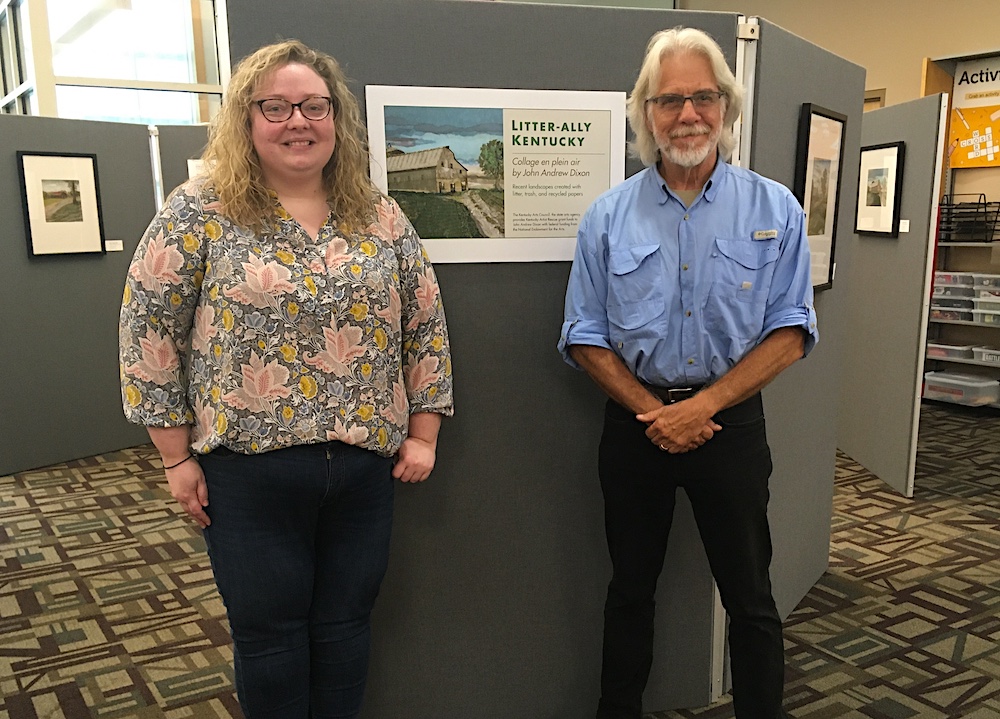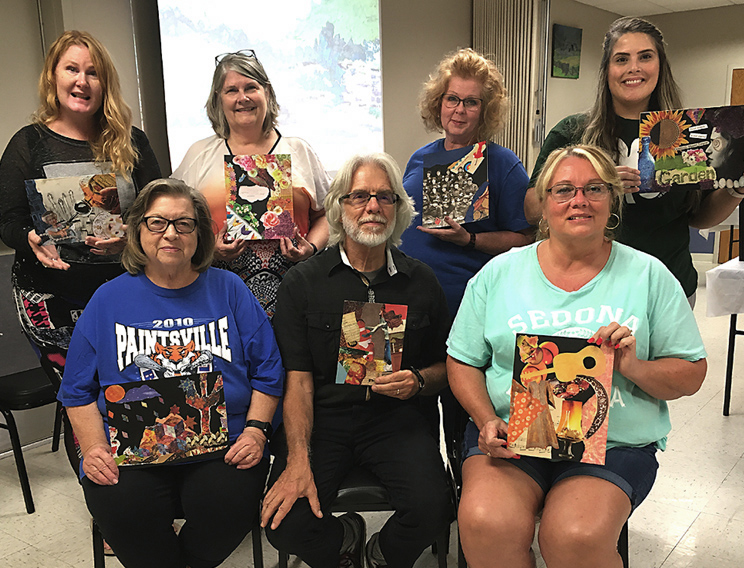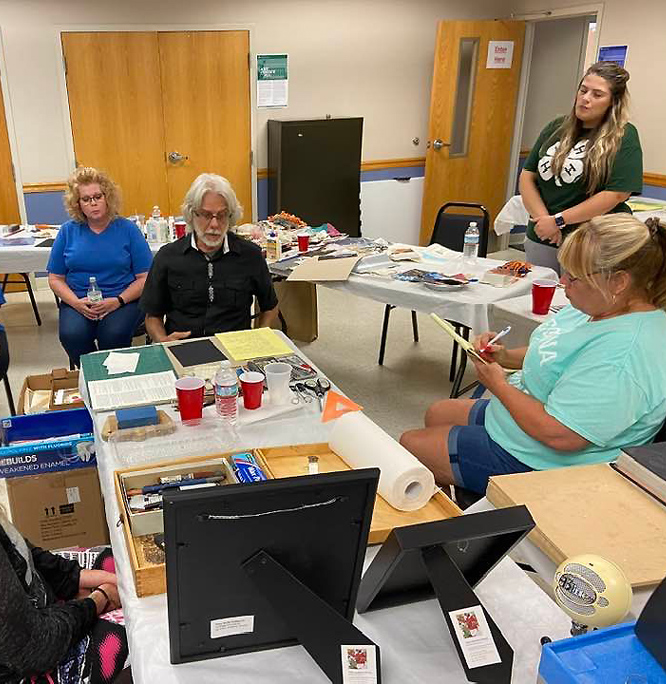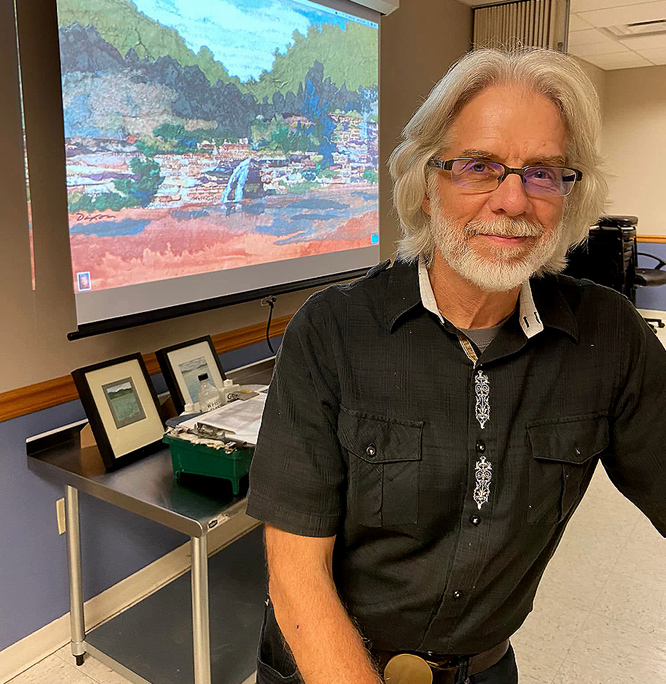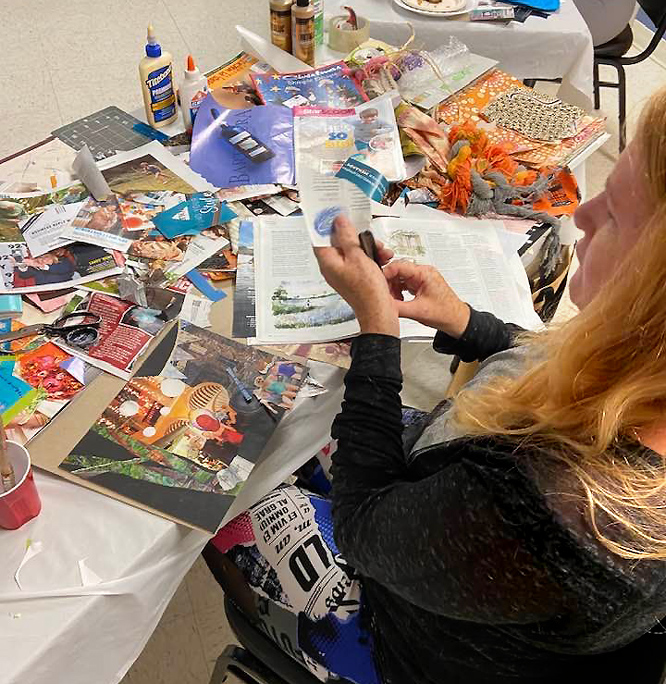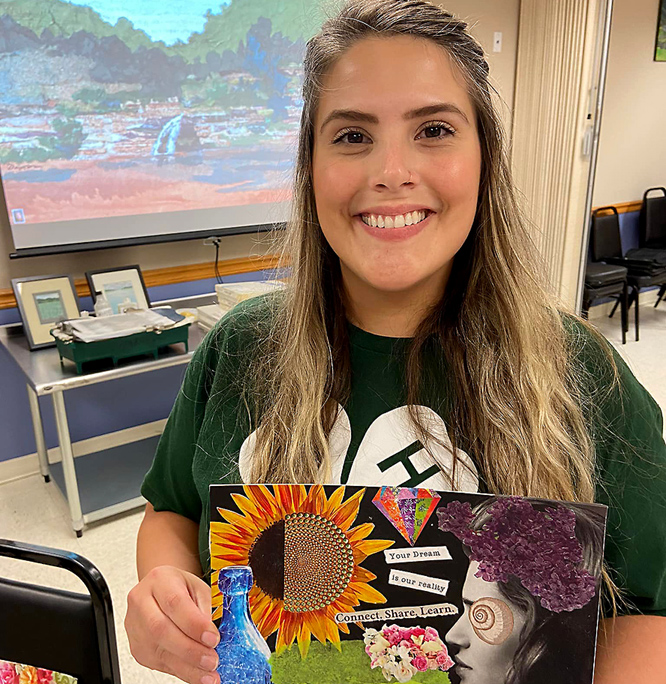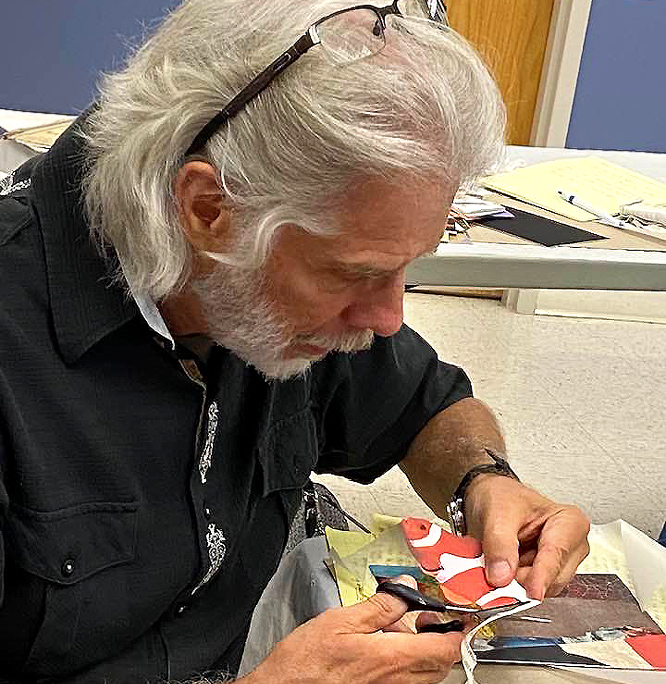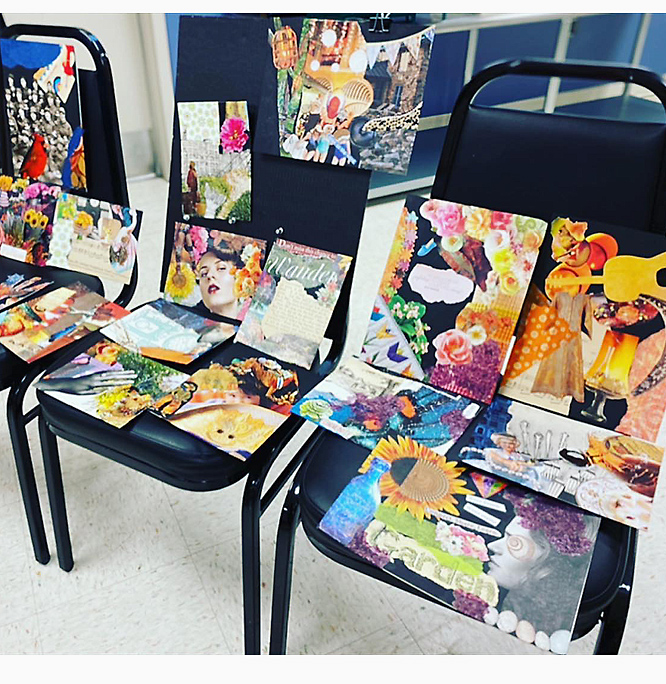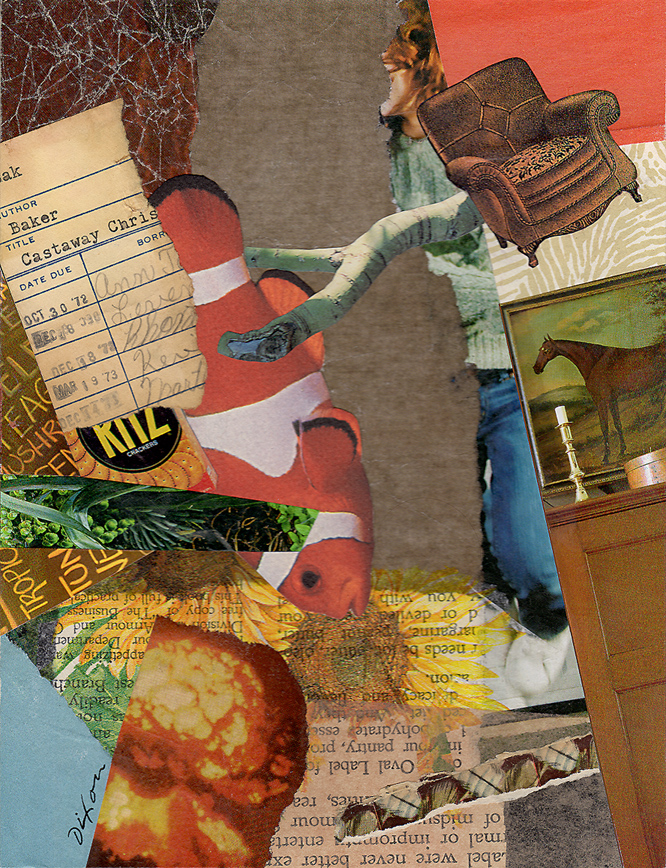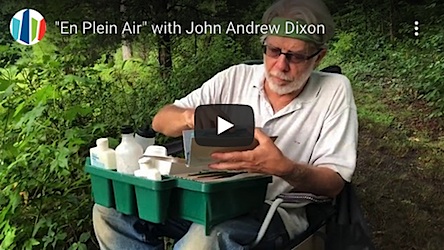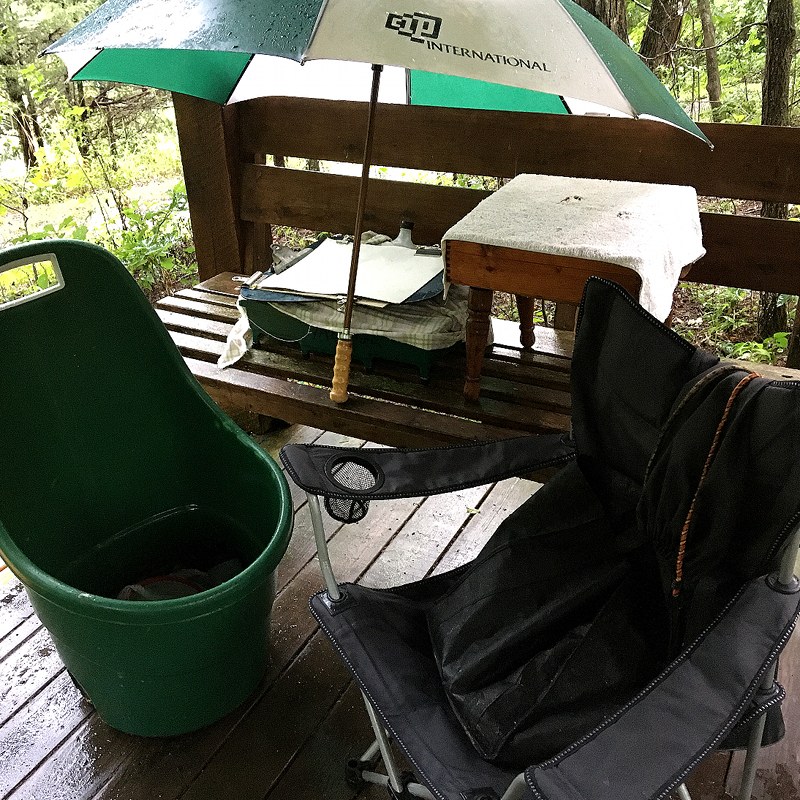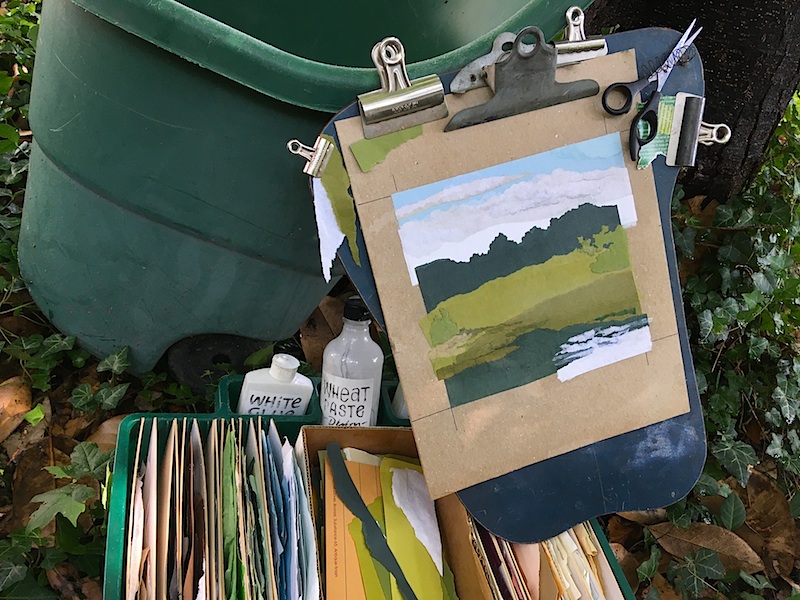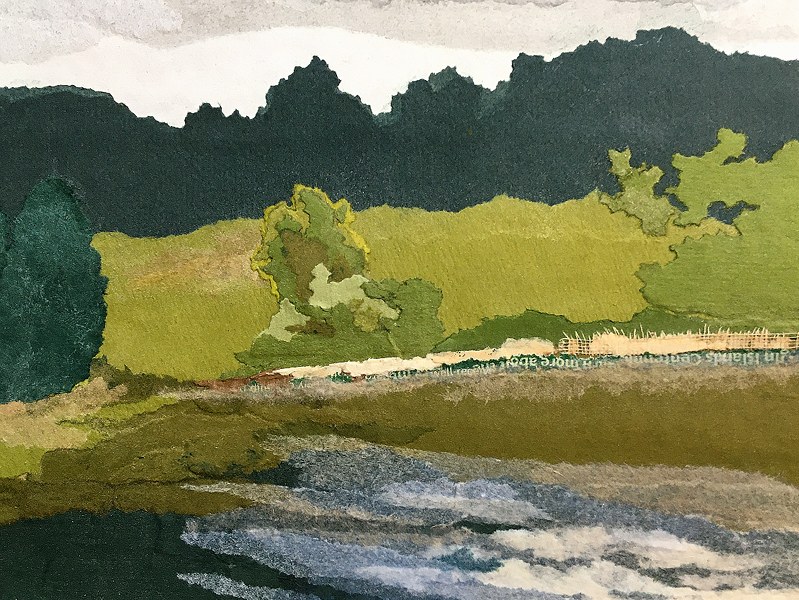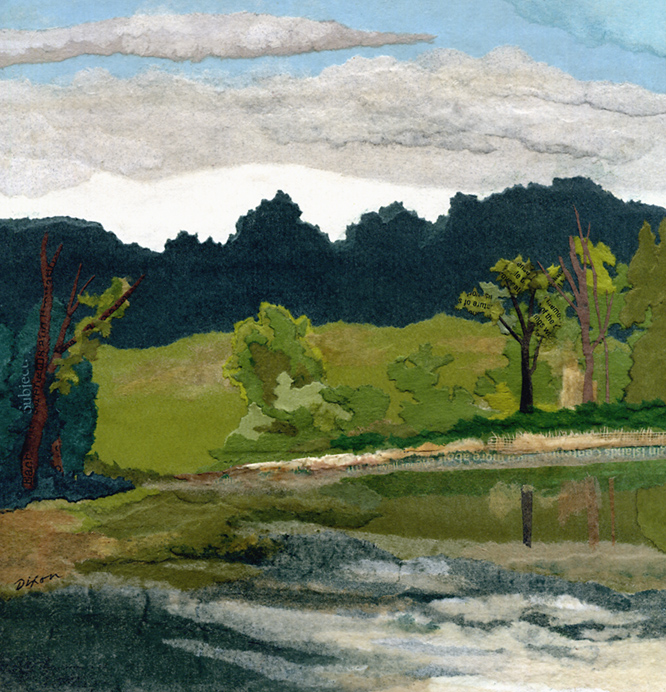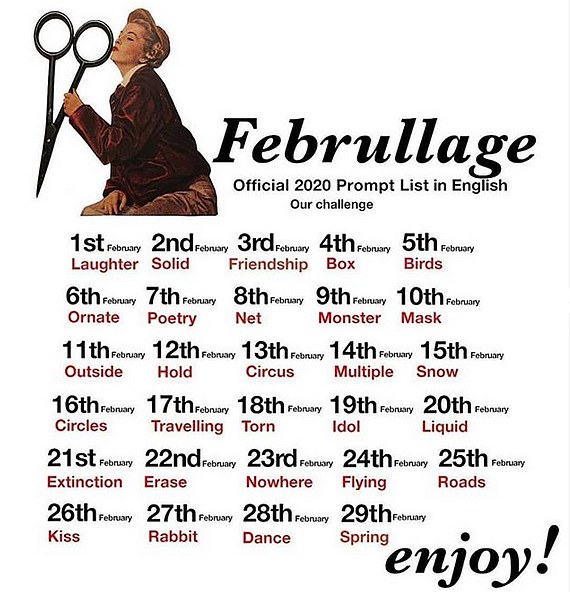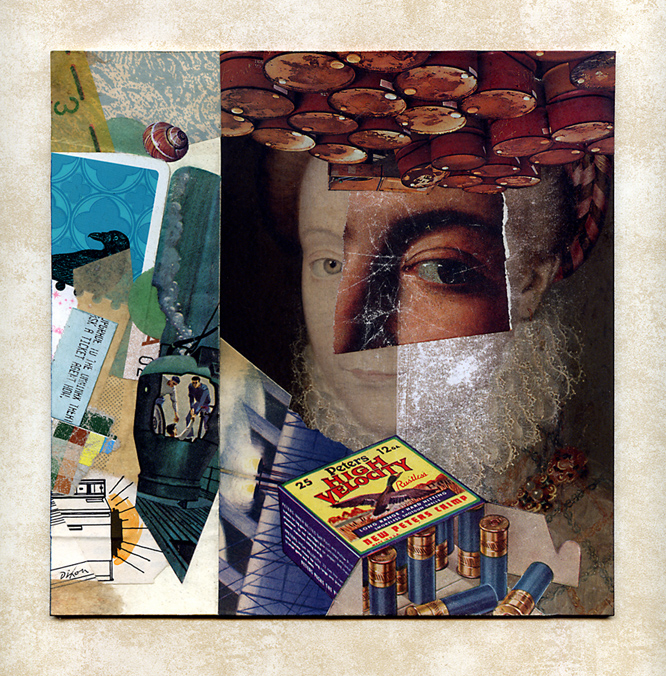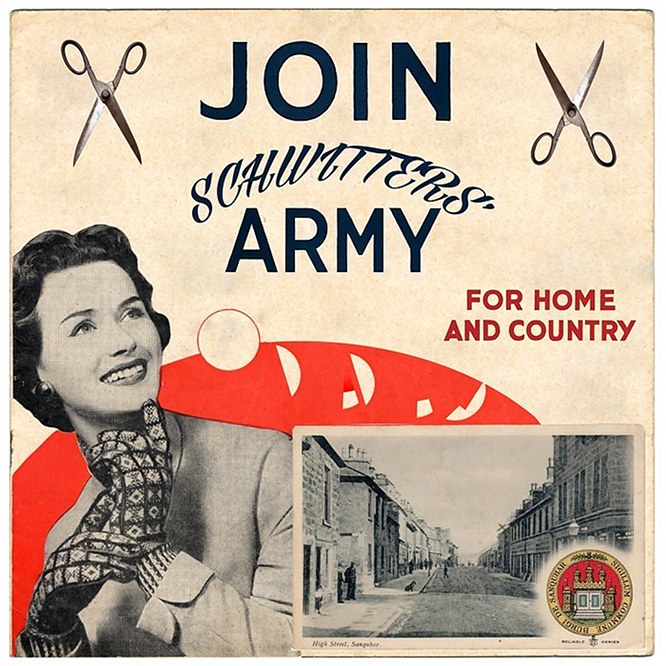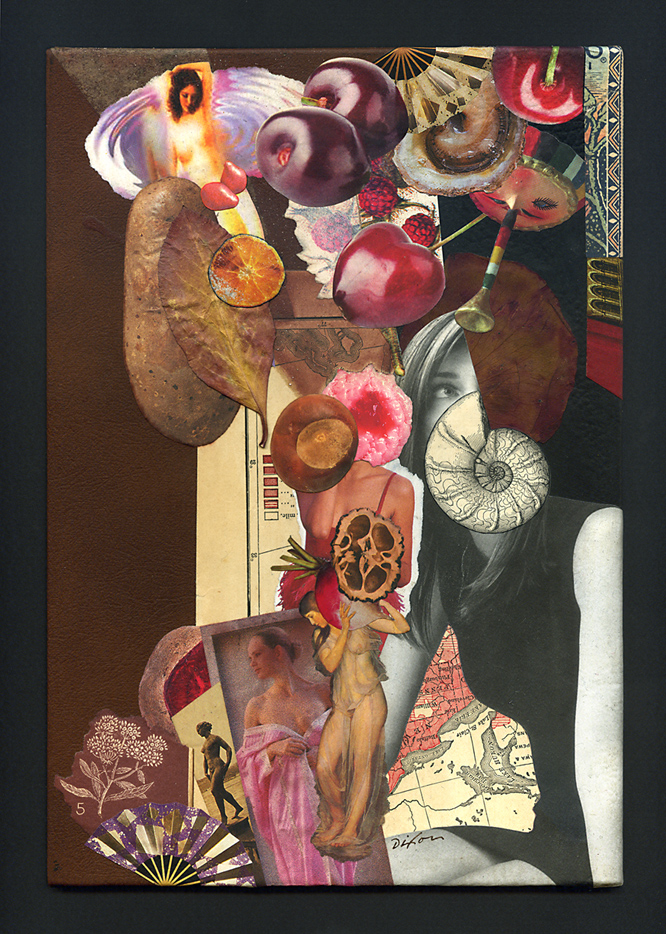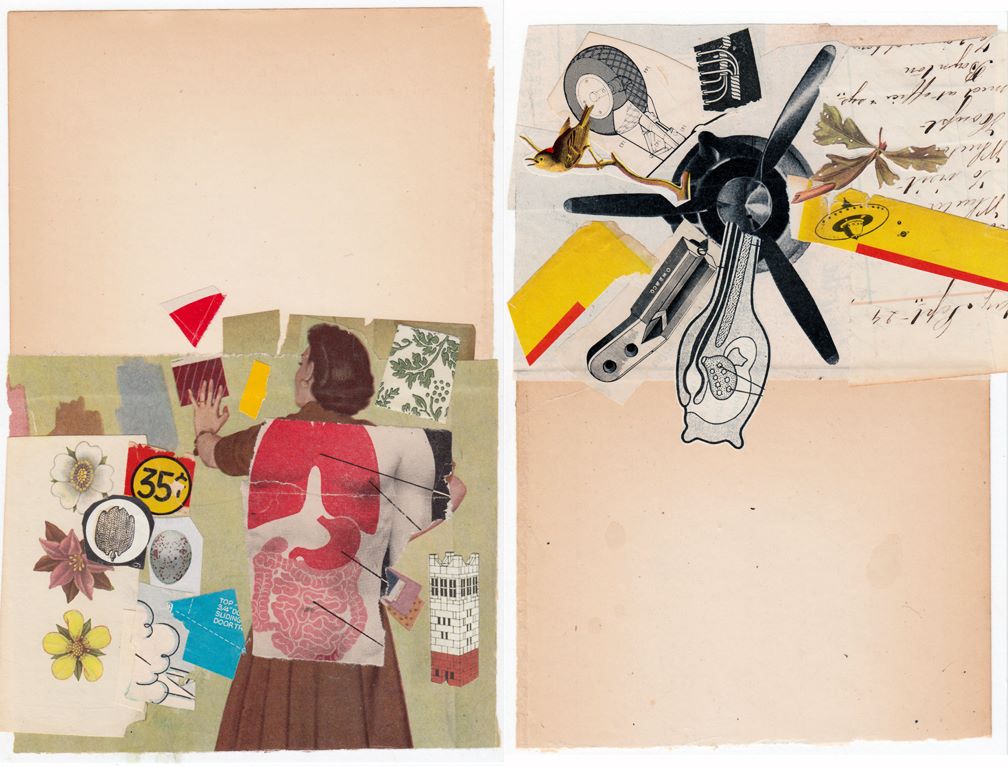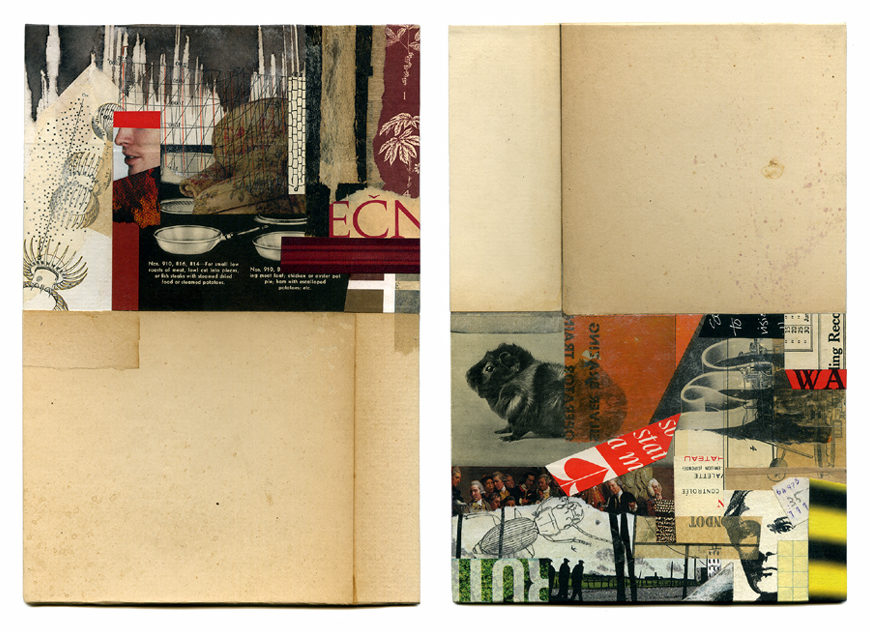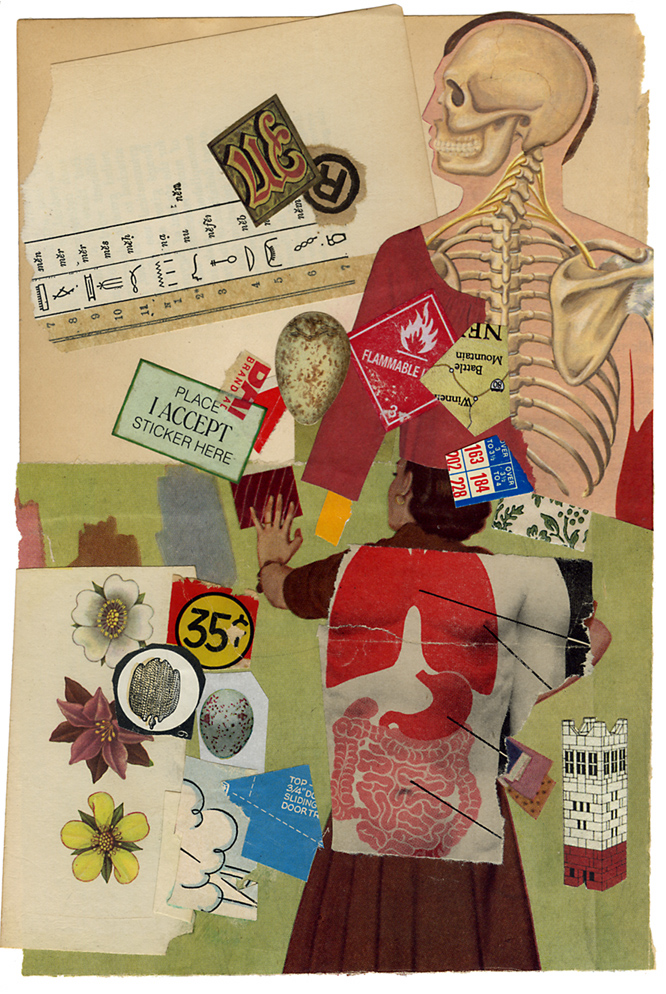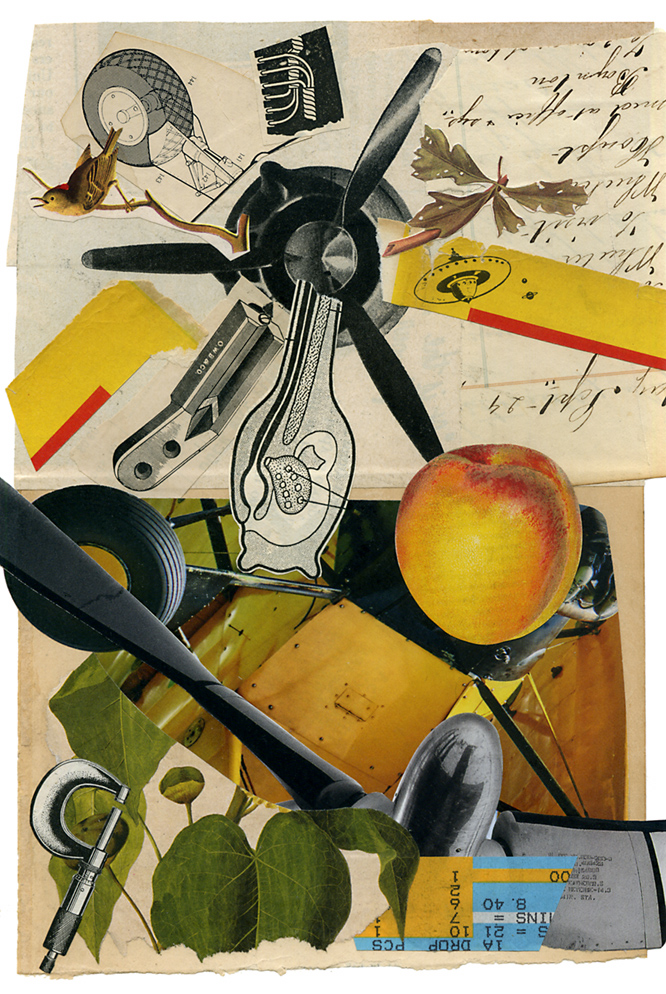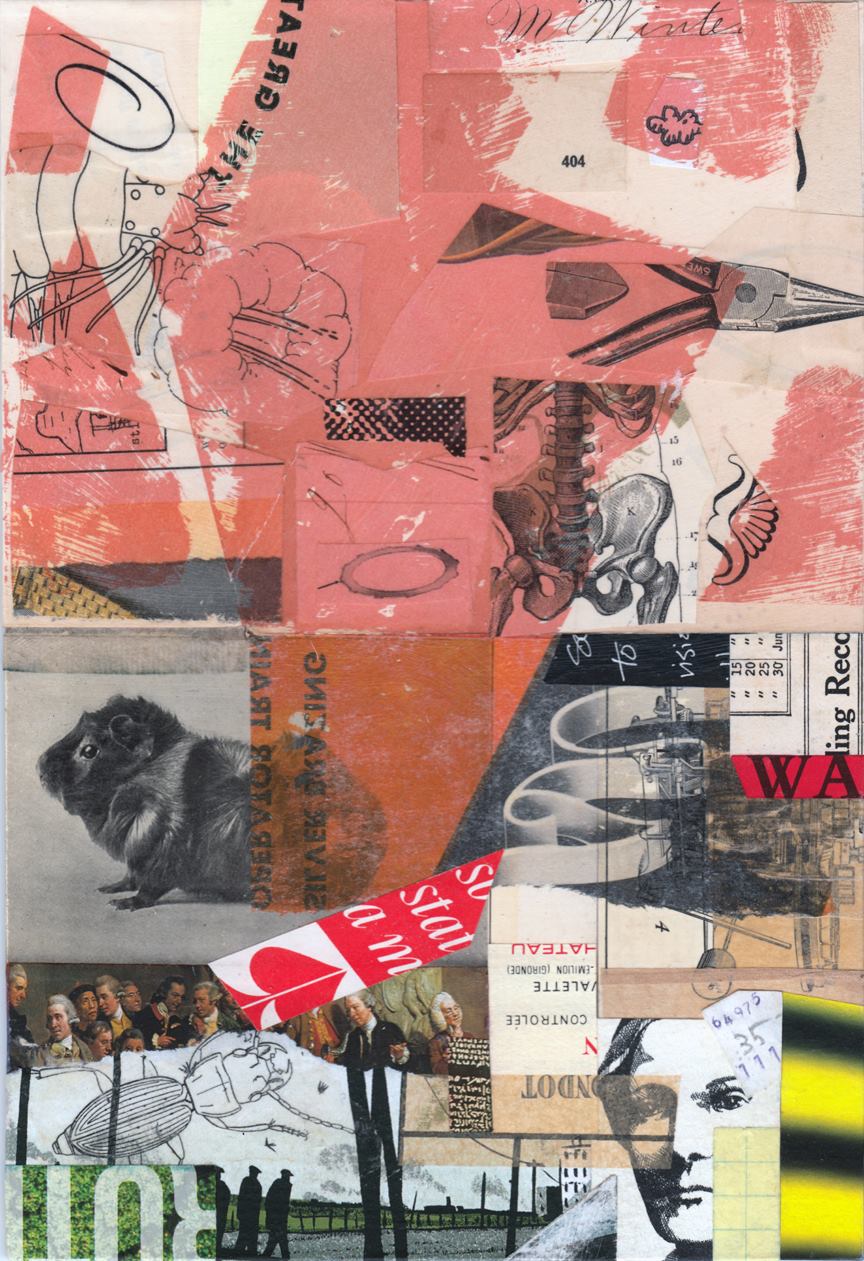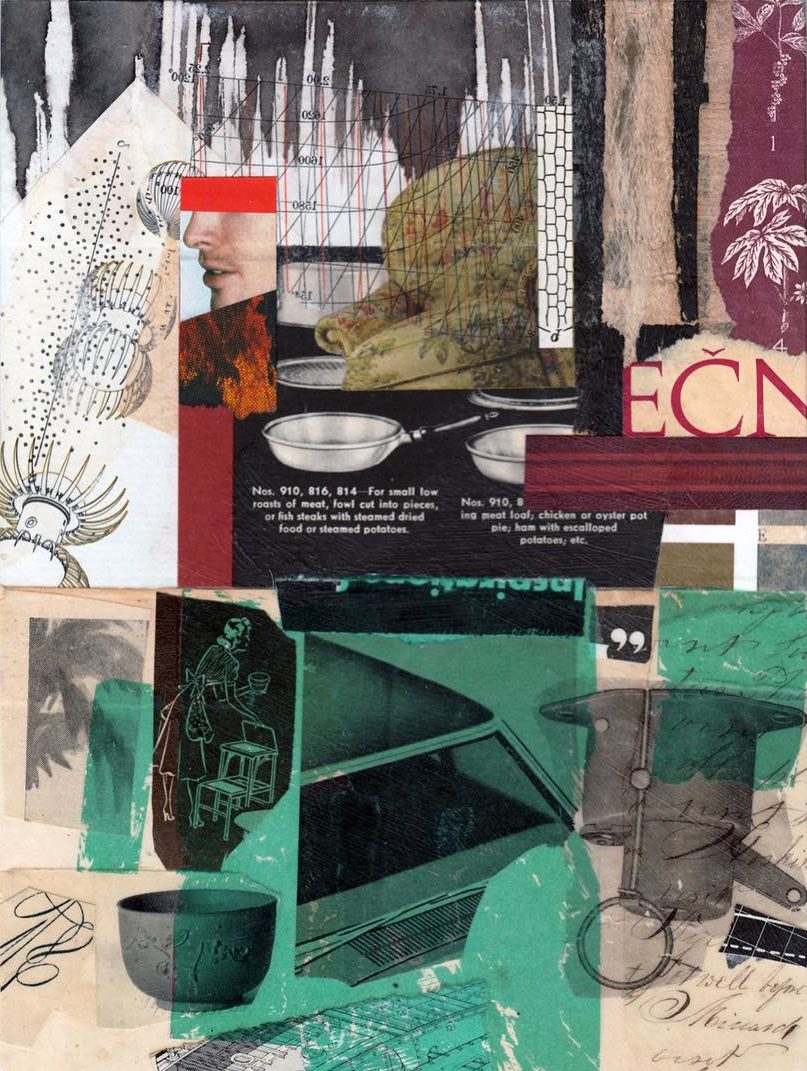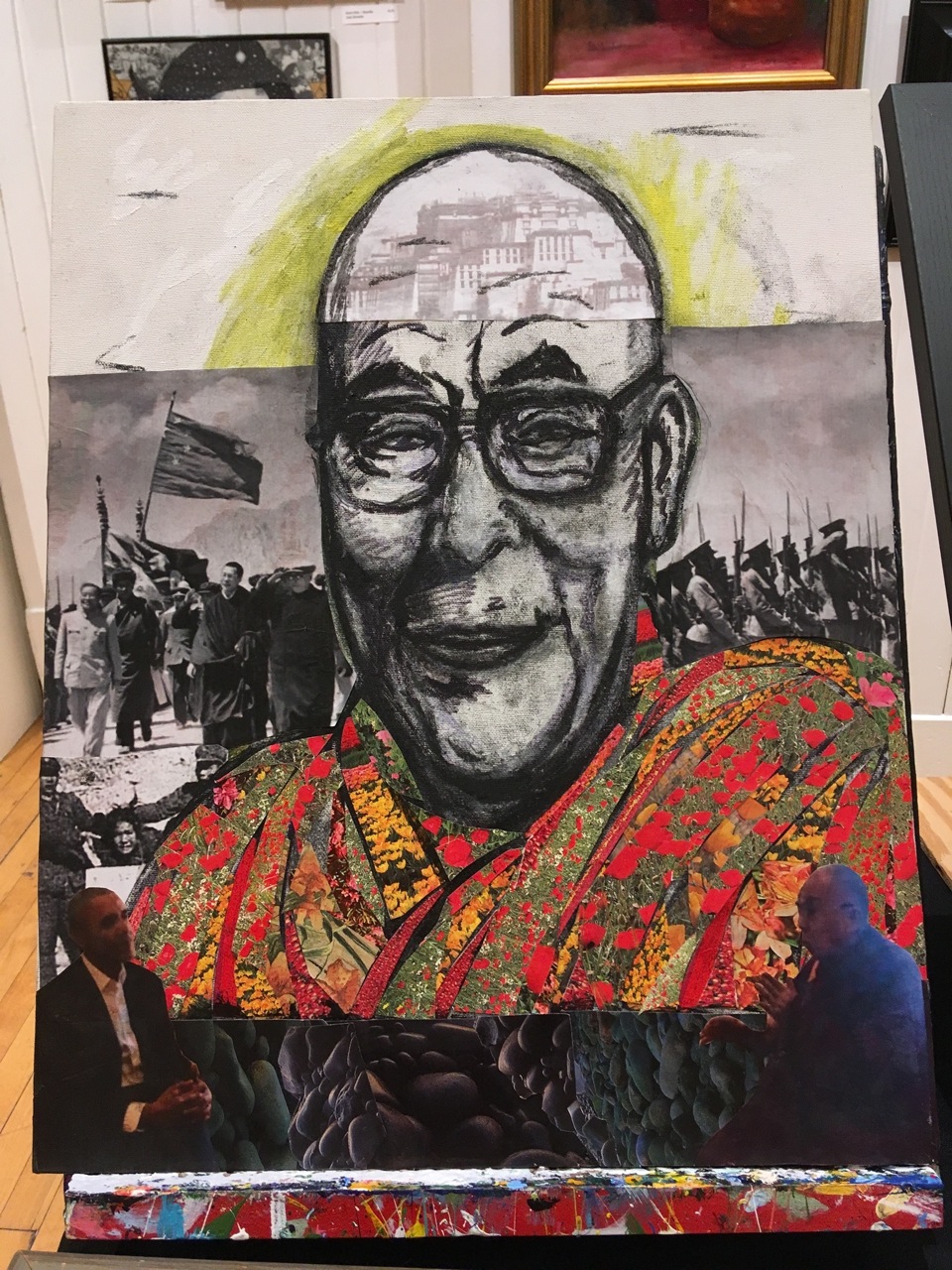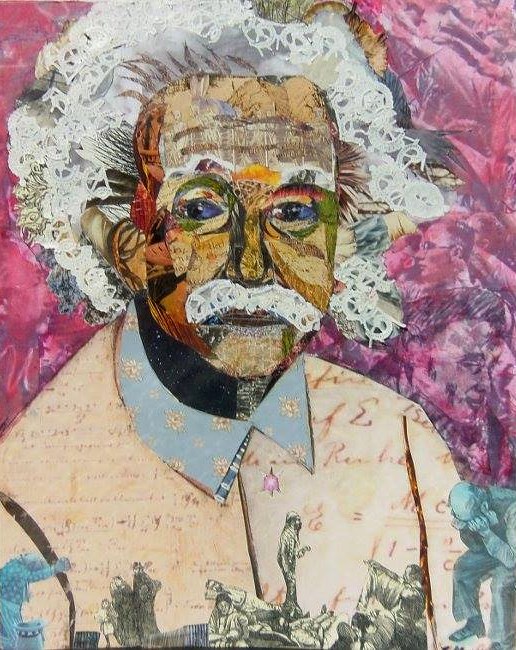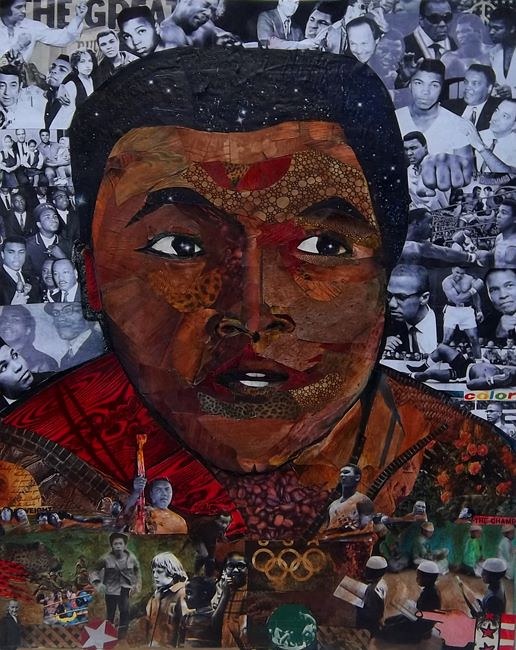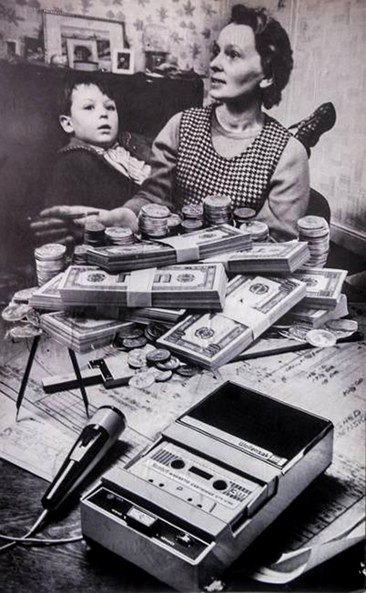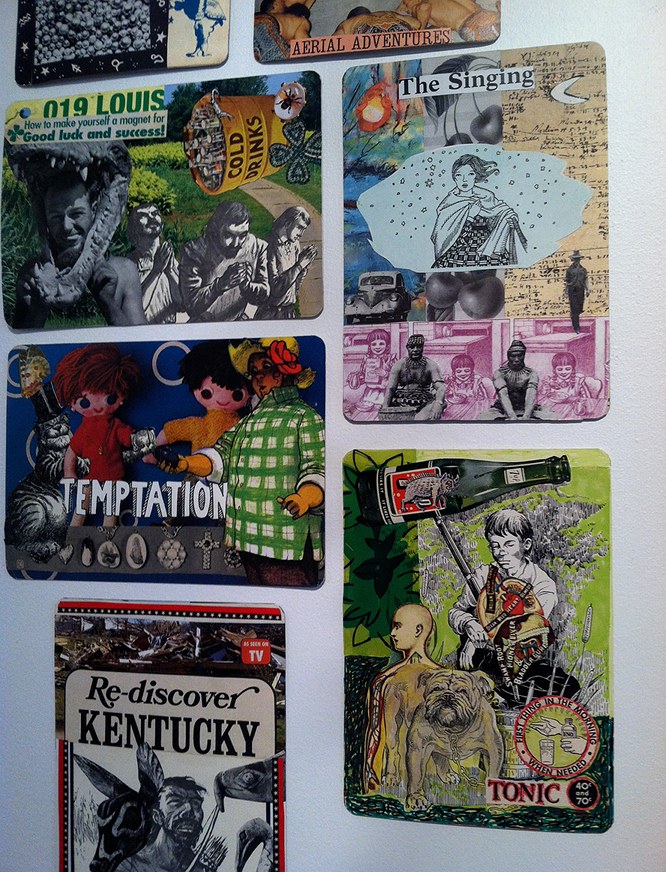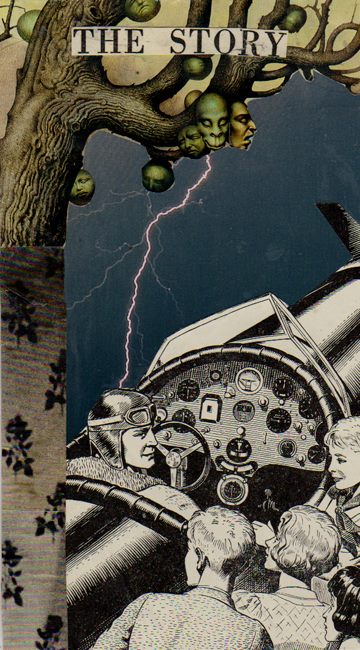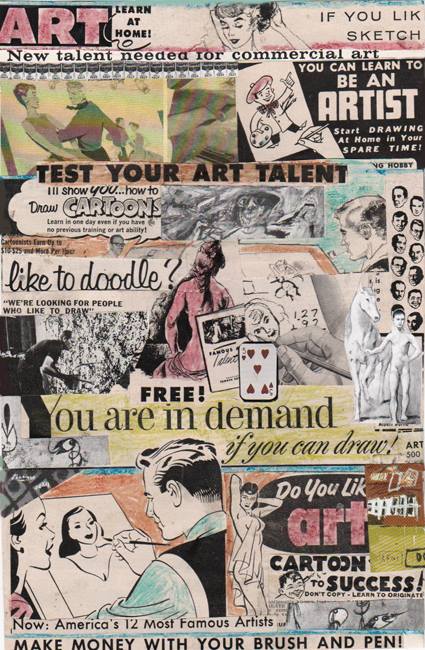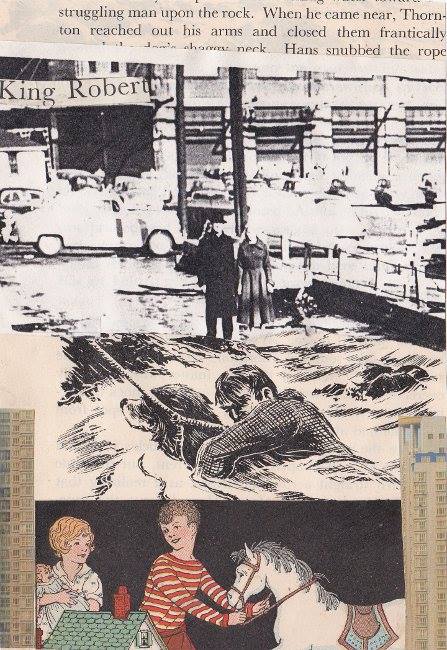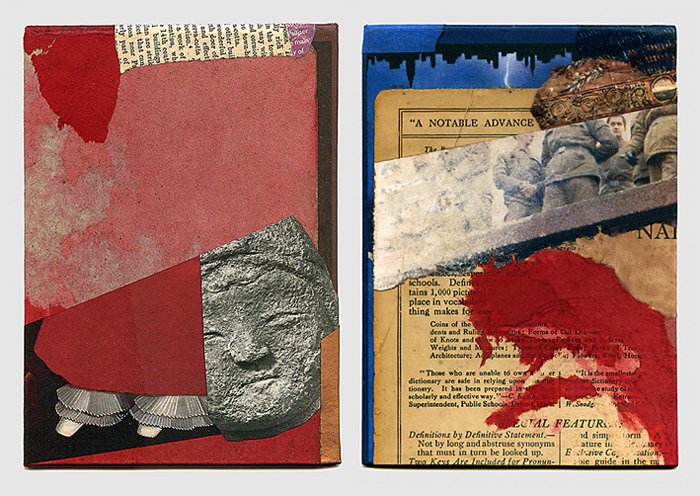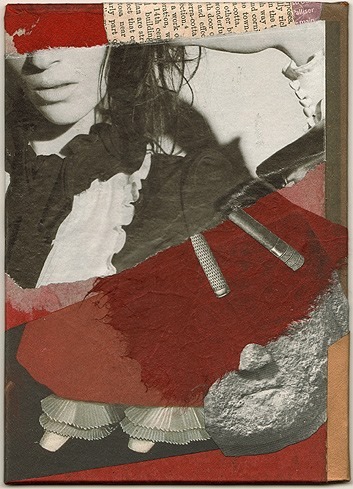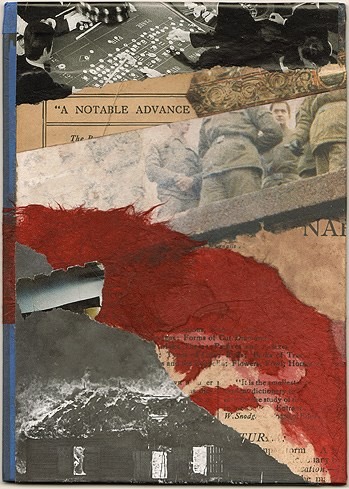“Behold, how good and pleasant it is when
brothers dwell in unity!”
— Psalms 133:1
Collage collaboration is thriving in the Bluegrass. Robert Hugh Hunt and I began to think about a new project earlier last year, to follow our double-piece venture of 2015 (unveiled at the Kentucky Artisan Center’s It Takes Two show, featured at JUXTAPOSED, and also recognized in the state capitol rotunda as part of the 2016 Governor’s Derby Exhibit). 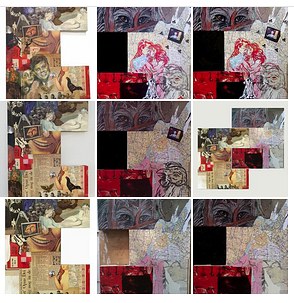 Based on a thumbnail sketch in my journal that suggested a pair of interlocking shapes, we each took a 16×20 canvas-on-wood construction and worked independently on a solution to our “puzzle.” As we shared images online, a color scheme evolved as visual ideas echoed. Out of the gate, a found drawing of lupine eyes would demand a lower face with grinning mouth. Before long, we had exchanged a digital simulation of how the pieces would configure. Robert responded with a television element after I pasted the face of Fidel into a vintage TV set. (Strangely enough, this was a few weeks before the dictator’s demise.) When my partner, known for his mixed-media roosters, drew a chicken head, I added a corresponding game fowl to further the red-black theme. Did my fragment of a playing card spark his array of floating club symbols? His hand-drawn kissers certainly inspired my pencil and acrylic rendering of the “photo-booth” Kennedys.
Based on a thumbnail sketch in my journal that suggested a pair of interlocking shapes, we each took a 16×20 canvas-on-wood construction and worked independently on a solution to our “puzzle.” As we shared images online, a color scheme evolved as visual ideas echoed. Out of the gate, a found drawing of lupine eyes would demand a lower face with grinning mouth. Before long, we had exchanged a digital simulation of how the pieces would configure. Robert responded with a television element after I pasted the face of Fidel into a vintage TV set. (Strangely enough, this was a few weeks before the dictator’s demise.) When my partner, known for his mixed-media roosters, drew a chicken head, I added a corresponding game fowl to further the red-black theme. Did my fragment of a playing card spark his array of floating club symbols? His hand-drawn kissers certainly inspired my pencil and acrylic rendering of the “photo-booth” Kennedys.
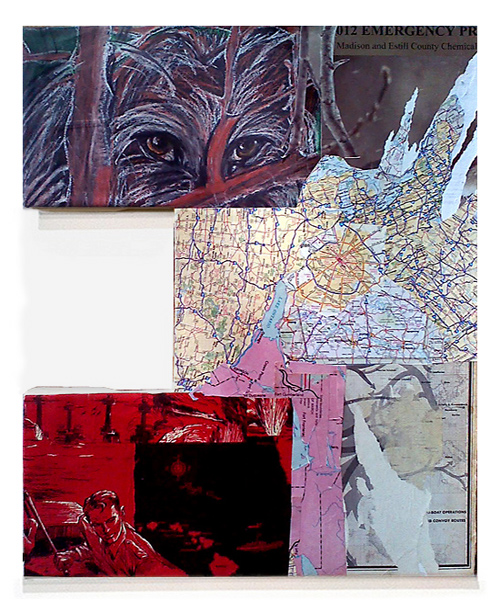
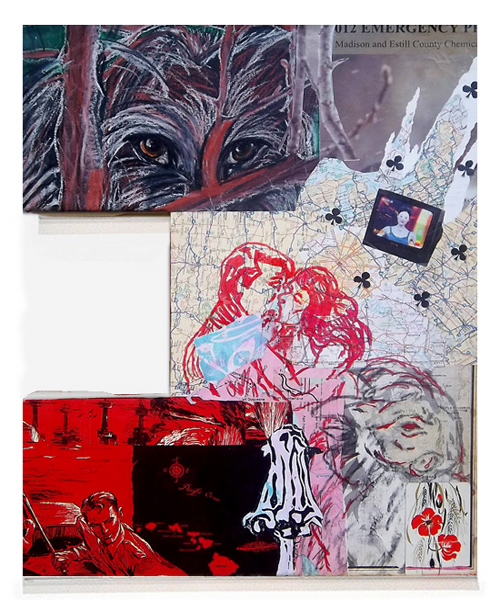
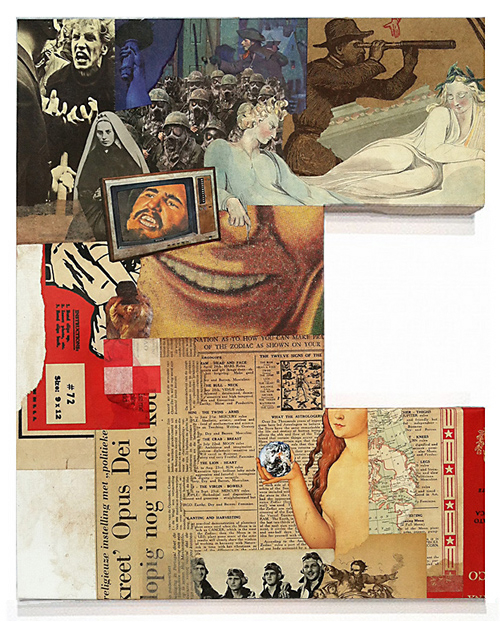
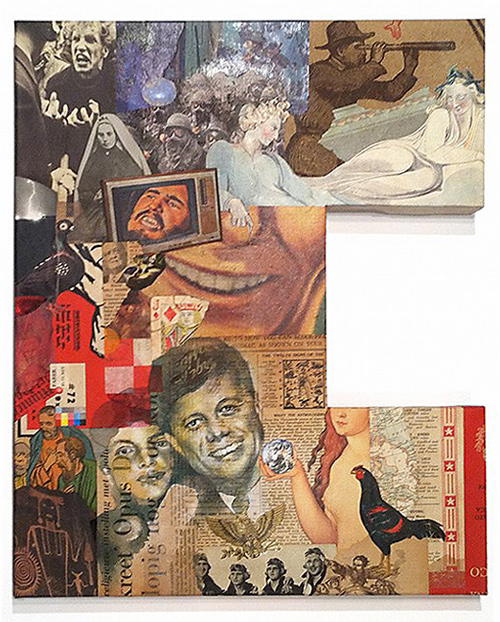
Finishing touches were made after we had shared our final interim images. When our halves converged for the culminating “intercourse,” we thought it desirable for me to install a clamping device, so that the components might stand alone in the future. I explored possibilities and tried some ideas at my workbench, but, alas, I have never been an engineer. Fortunately, my kind collaborator was comfortable with a decision to join them permanently and declare victory.
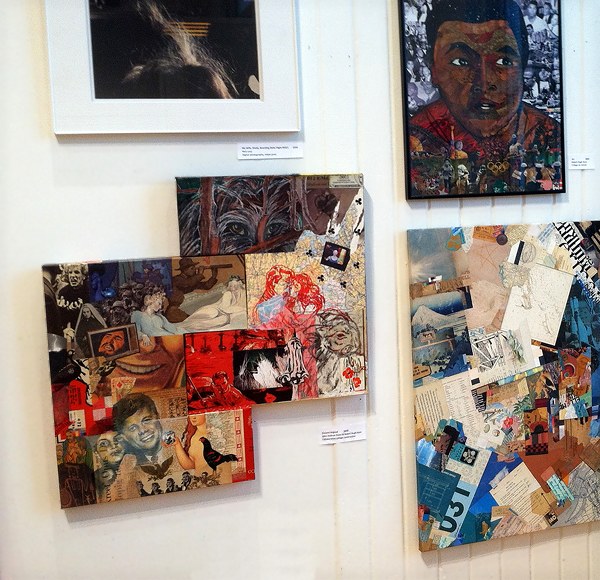 All in all, I found our creative teamwork to be an immensely satisfying collaboration. The result was selected to be part of the local NEW YEAR NEW ART winter exhibition. Even though the interlocking feature of the artwork is probably more discernible when viewing it in person, it makes for a provocative online impression, and we were pleased that it was designated as the promotional poster for the show.
All in all, I found our creative teamwork to be an immensely satisfying collaboration. The result was selected to be part of the local NEW YEAR NEW ART winter exhibition. Even though the interlocking feature of the artwork is probably more discernible when viewing it in person, it makes for a provocative online impression, and we were pleased that it was designated as the promotional poster for the show. 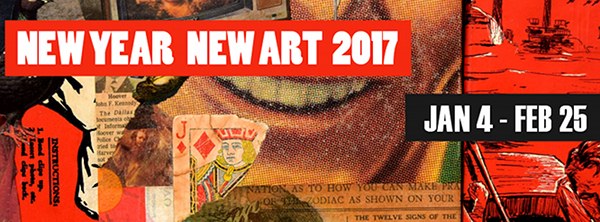 After I had sorted through dozens of potential titles with a lack of conviction, Robert coined the phrase that stuck. He wrote this to me when he summed up our experimental process:
After I had sorted through dozens of potential titles with a lack of conviction, Robert coined the phrase that stuck. He wrote this to me when he summed up our experimental process:
“Well, this collaboration was unlike any I had done. Most art collaborations have multiple artists working one at a time on a single piece until it is finished. As the artist, you are either ‘starting’ the collaborative piece or ‘finishing’ it, and, in cases with more than two collaborators, you could be working the ‘middle’ of the piece. But with Dreams Aligned, we took a different approach — creating two pieces, which I felt should stand on their own, and merging the two into one piece that not only worked as a whole, but made a stronger piece than the two works alone. And the fact that we had worked together successfully before, and understood each other’s artistic language, and that we kept a visual dialogue ongoing, showing each other the progress on their ‘half,’ following each other’s visual cues on medium, color, composition, etc. — in this way we were able to create a collaboration with two distinct artistic halves. It wasn’t a merging as much as an alignment of our artistic styles and languages, hence the title.”
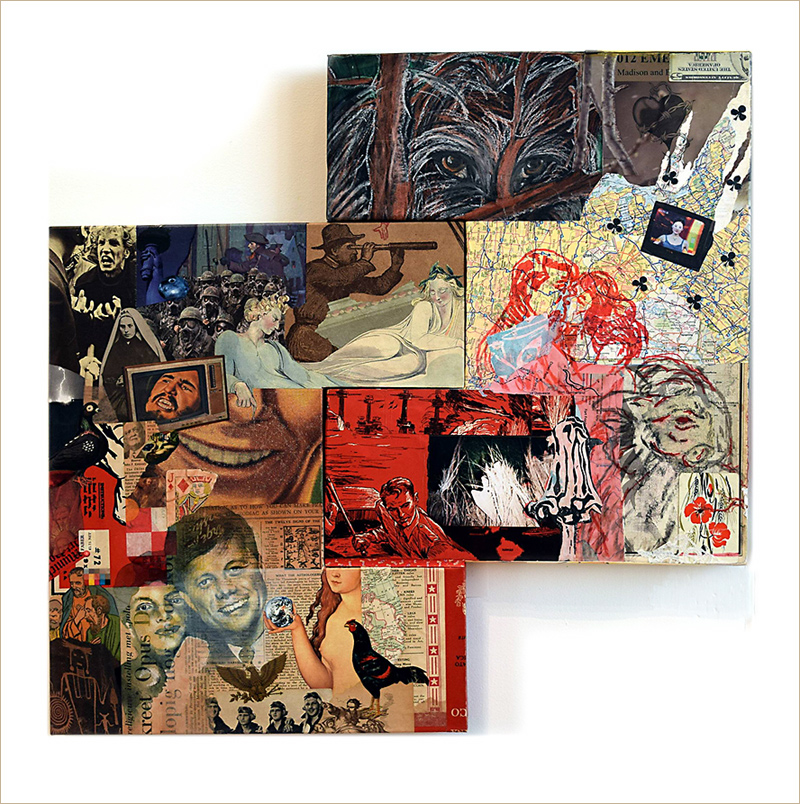
Dreams Aligned
a collage collaboration by J A Dixon and R H Hunt
mixed-media construction, 26.75 x 26.5 inches
(left component by Dixon, right component by Hunt)
available for purchase
